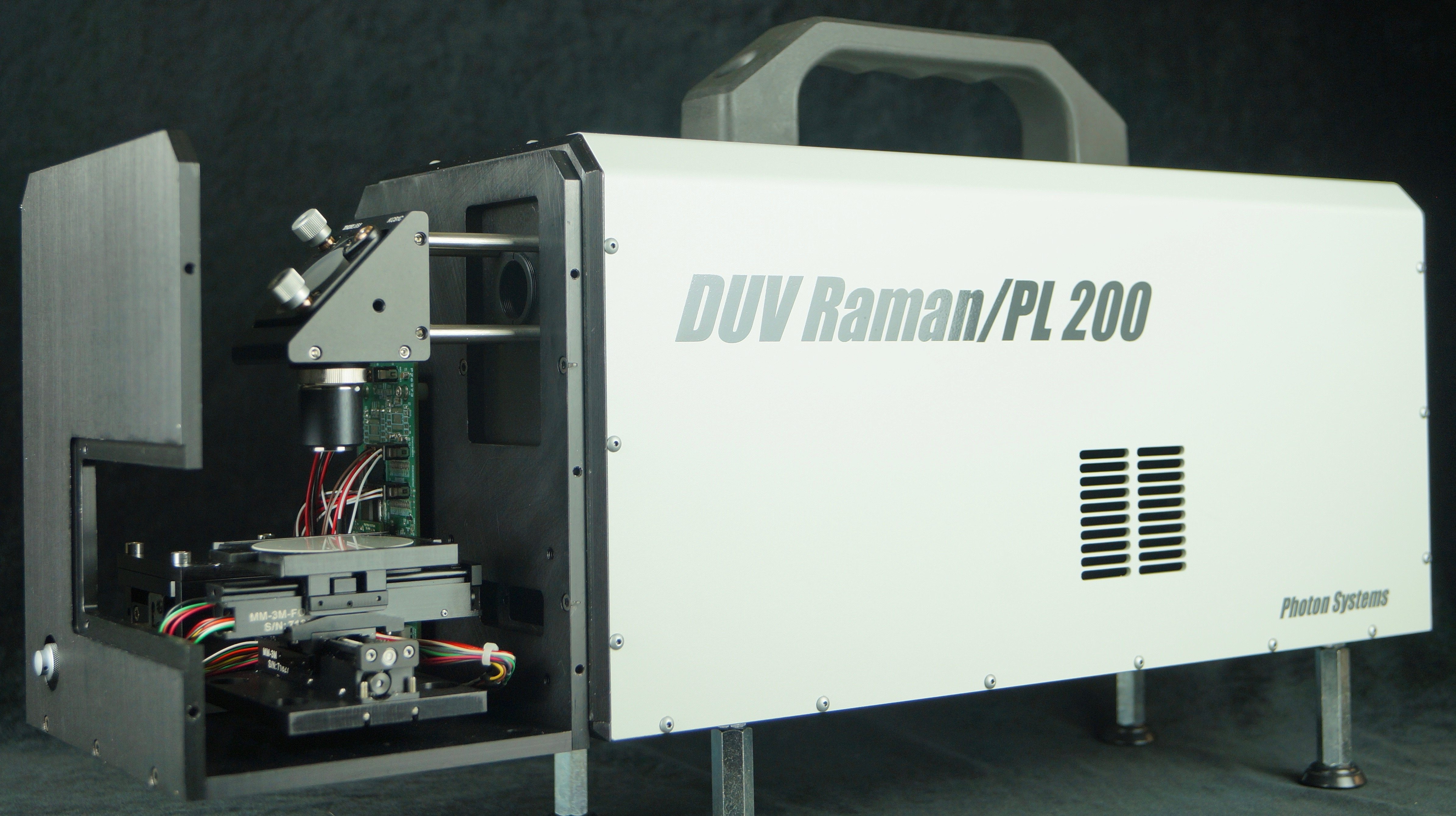The Mars 2020 Perseverance Rover landed on Mars February 18, 2021 after more than 6 months of space travel. The Perseverance Rover, with the SHERLOC instrument landed in the Jezero crater to search for signatures of life. SHERLOC is a highly advanced deep UV fluorescence and Raman spectrometer that can withstand the Mars environment and is capable of generating chemical and organic maps within a mineral matrix with a mapping field of view of ~1 cm2 .
On July 31, 2014 NASA announced the selection of the Scanning Habitable Environments with Raman & Luminescence for Organics & Chemicals (SHERLOC) instrument for the Mars 2020 rover arm. SHERLOC is a deep UV fluorescence/Raman instrument that has at its heart a compact, narrow-linewidth, deep UV laser, developed by Photon Systems, Inc., and further refined through several JPL and SBIR contracts. This laser has been tested to TRL-9 and enables spatial mapping of fluorescence emissions and Raman scatter of organics and astrobiologically relevant minerals on abraded surfaces and boreholes created by the rover coring system.
Click here to view the SHERLOC instrument on the arm as it is folding into the Rover body.
Click here to view the NASA Mars 2020 Perseverance Rover Mission page.
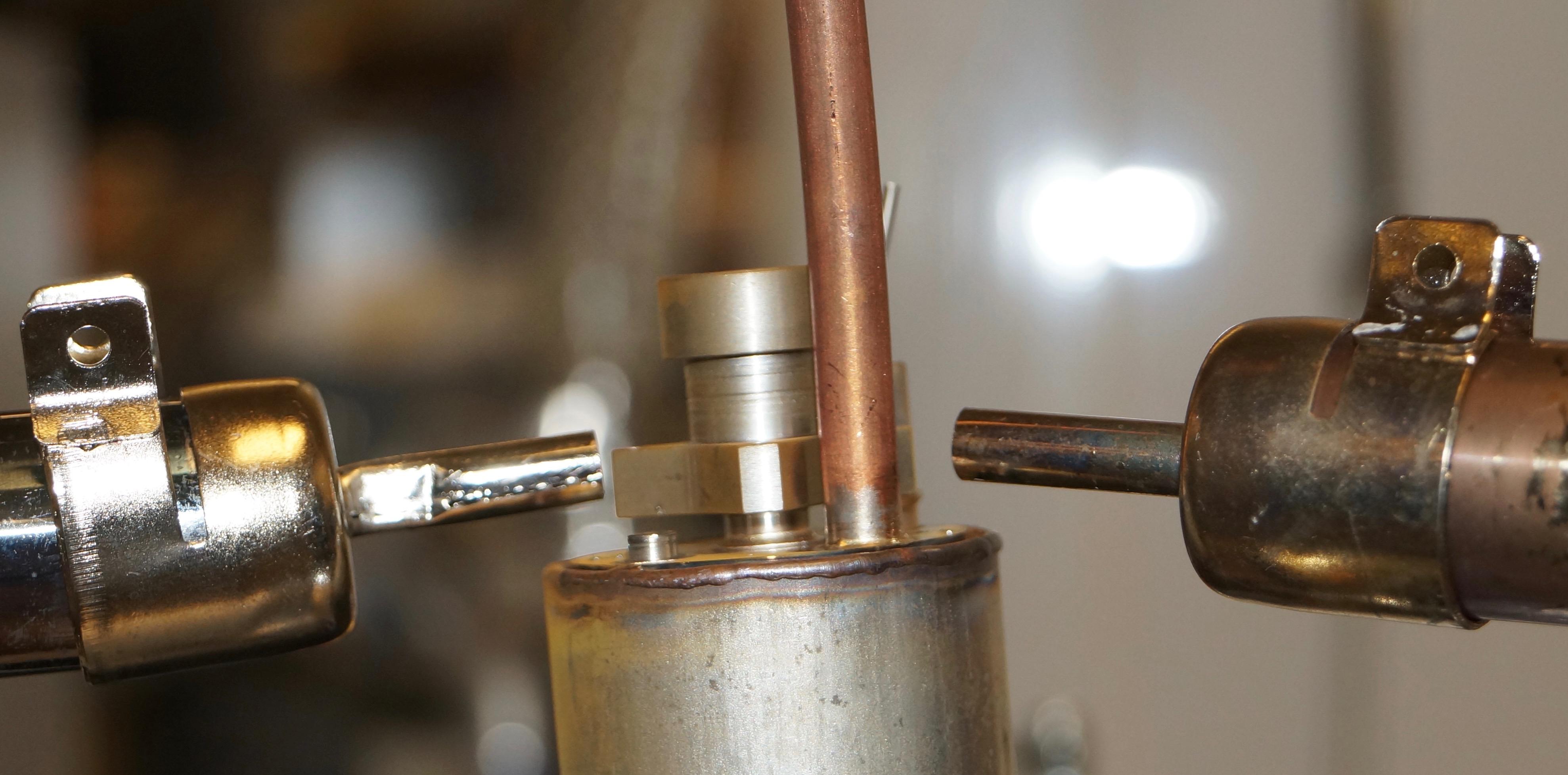
A metal vapor laser rugged enough for Mars
The photo to the right is of the breadboard SHERLOC instrument with dimensions about 2.4" high by 7.9" wide by 6.3" deep with the ability to perform Raman
fluorescence chemical maps over a 1 square cm area. Weight is less than about 9 lbs.
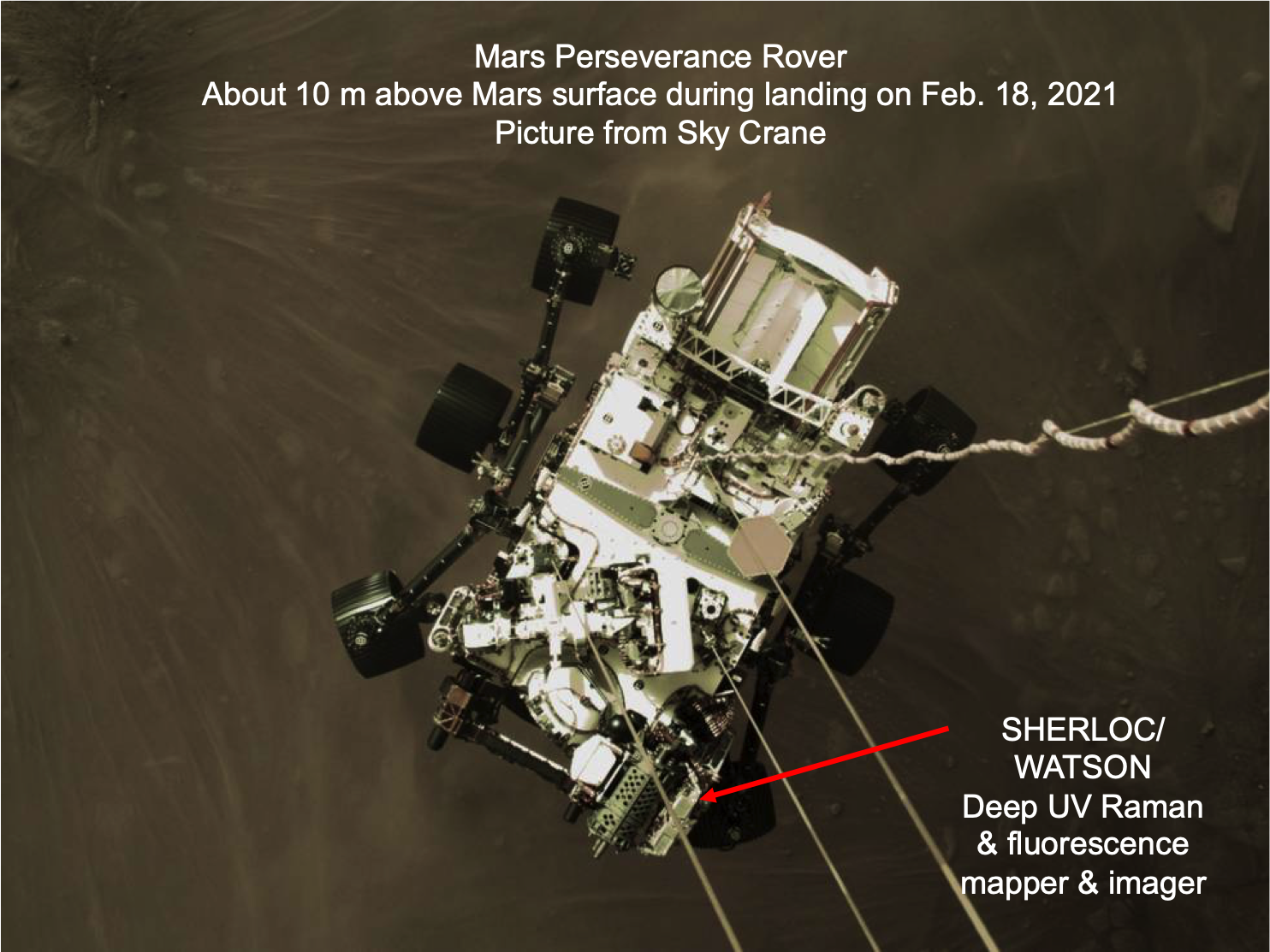
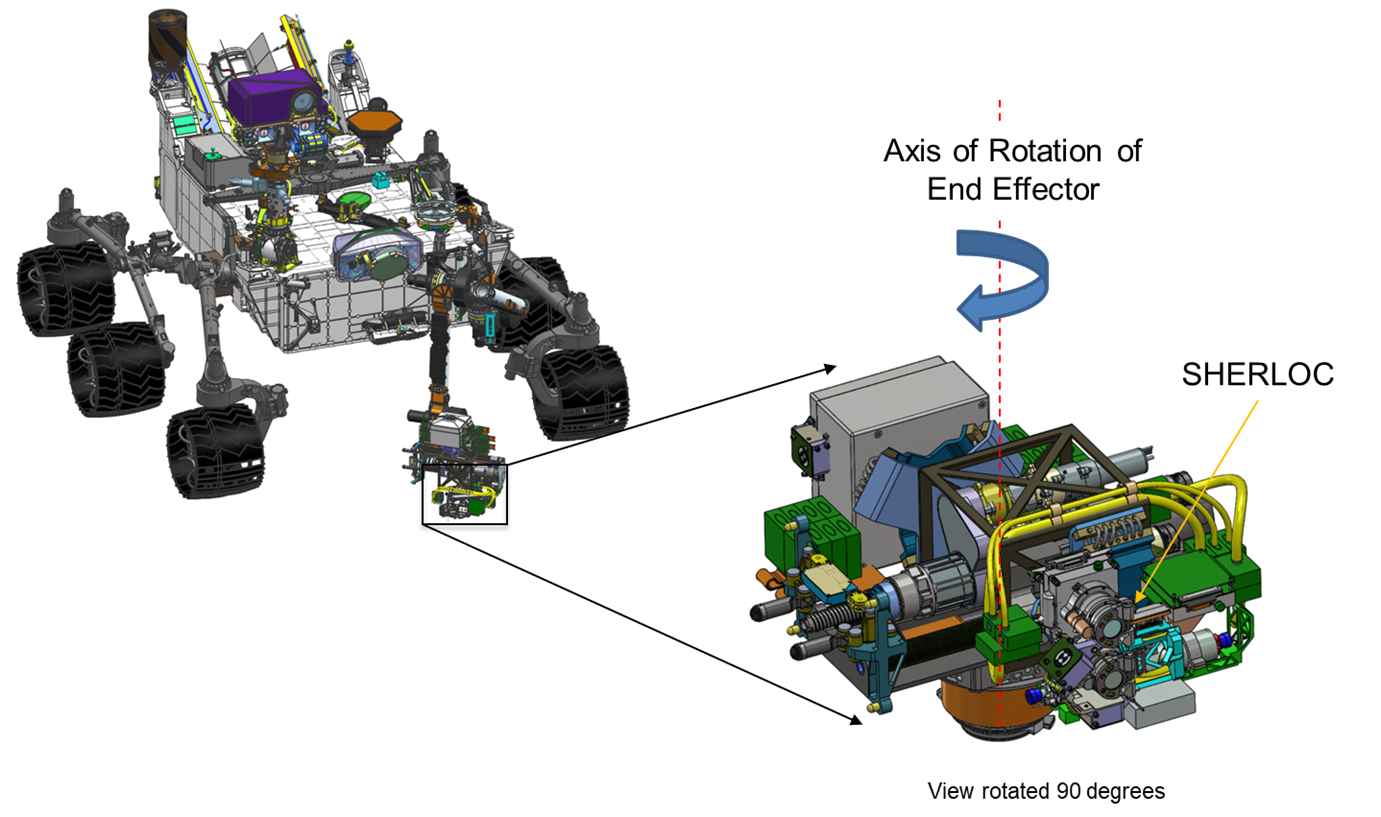
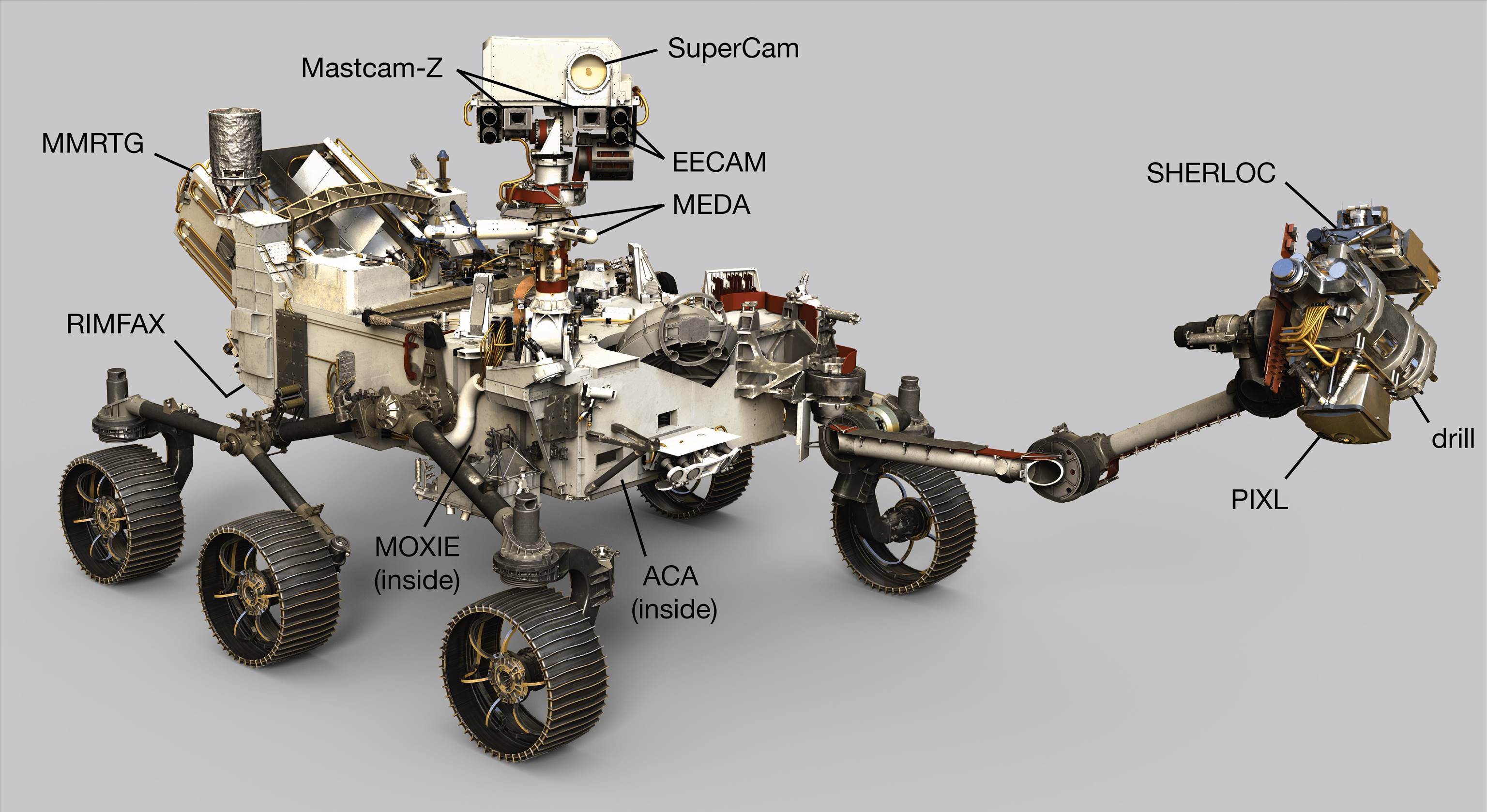
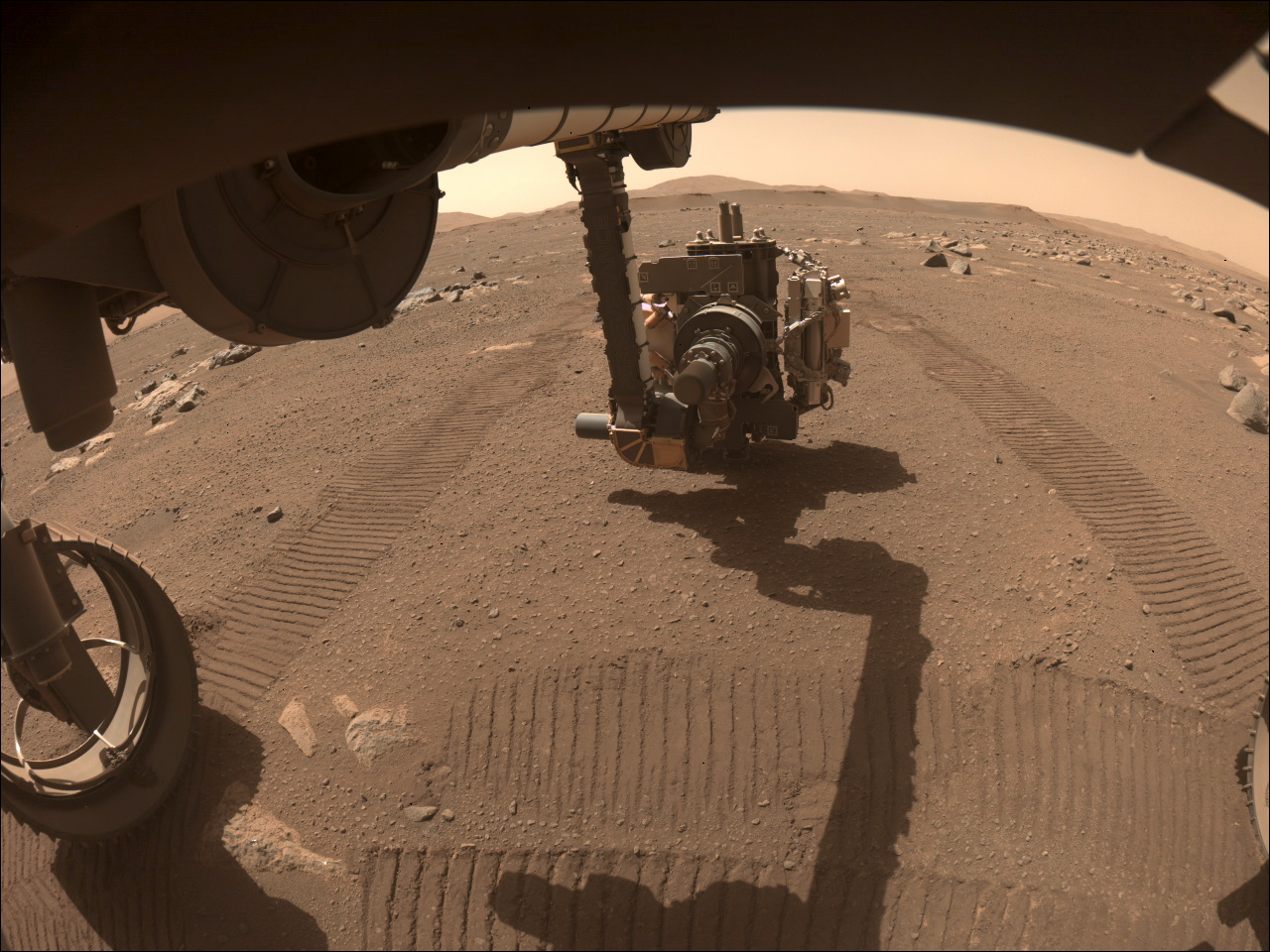
SHERLOC 1st deployment on the Mars surface
Photon Systems’ developed the Raman PL 200 instrument for commercial applications including wastewater analysis and pharmaceuticals. Integration of an XZY mapping stage and microscopic imager to the deep UV fluorescence and Raman spectrometer enables the acquisition of chemical and organics maps on a mineral matrix in a similar manner to SHERLOC, using the same laser employed in SHERLOC and providing mapping over 25 cm2. As such, the Raman PL 200 is uniquely capable of generating data that can be correlated to SHERLOC, unlike any commercially available Raman instrument on the market.
The Photon Systems’ 400 gram neon-copper (NeCu) laser provides excitation at 248.6nm with a linewidth less than 0.5 pm. Sub-250 nm excitation is key to enabling simultaneous detection of Raman and fluorescence emissions. The Photon Systems’ NeCu laser turns on instantly without the need for preheating, warm-up, or temperature regulation at ambient temperatures in a range from -135 degC to +70 degC. The laser has been tested over these temperature extremes as well as three times the shock and vibration limits imposed for similar Mars missions without failure. These lasers have previously been vetted on many expeditions to harsh environments on Earth such as Antarctica, the Arctic, and the deep Ocean.
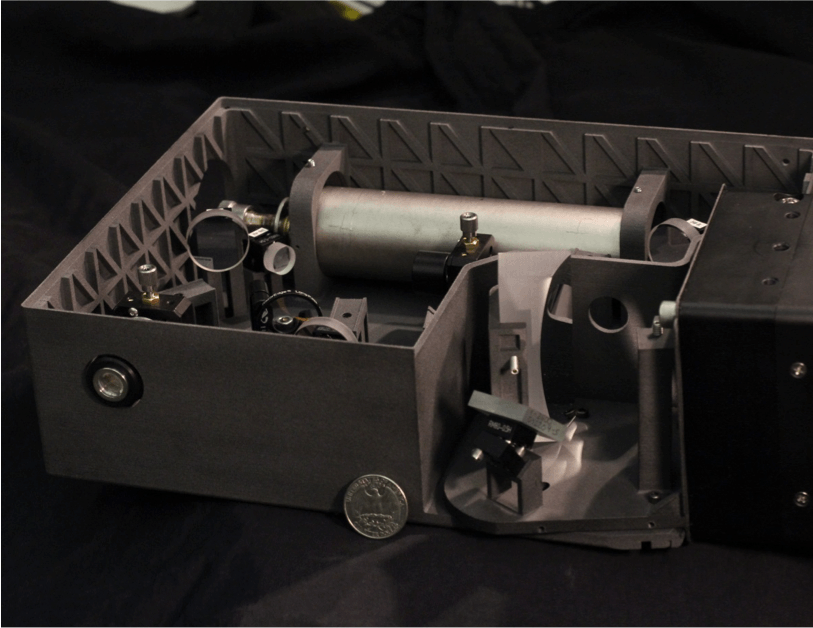
SHERLOC instrument breadboard
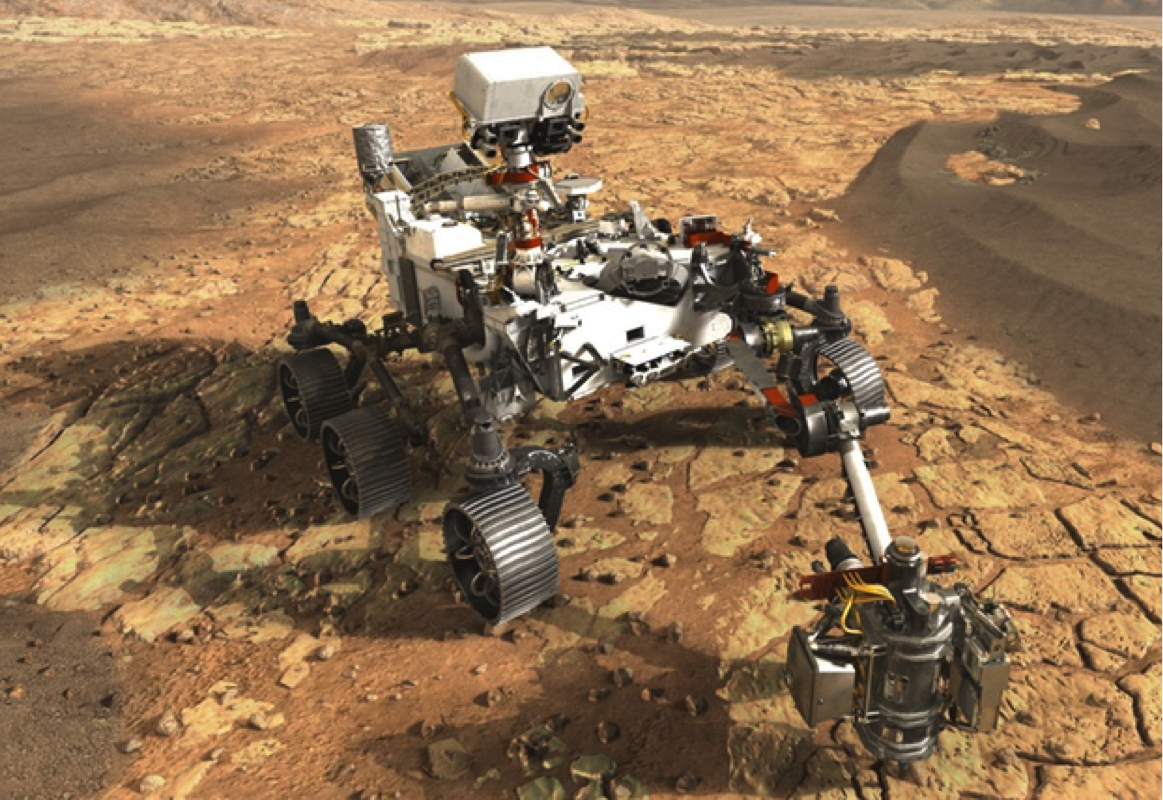
On Mars, the temperature ranges from -135 degC to +70 degC
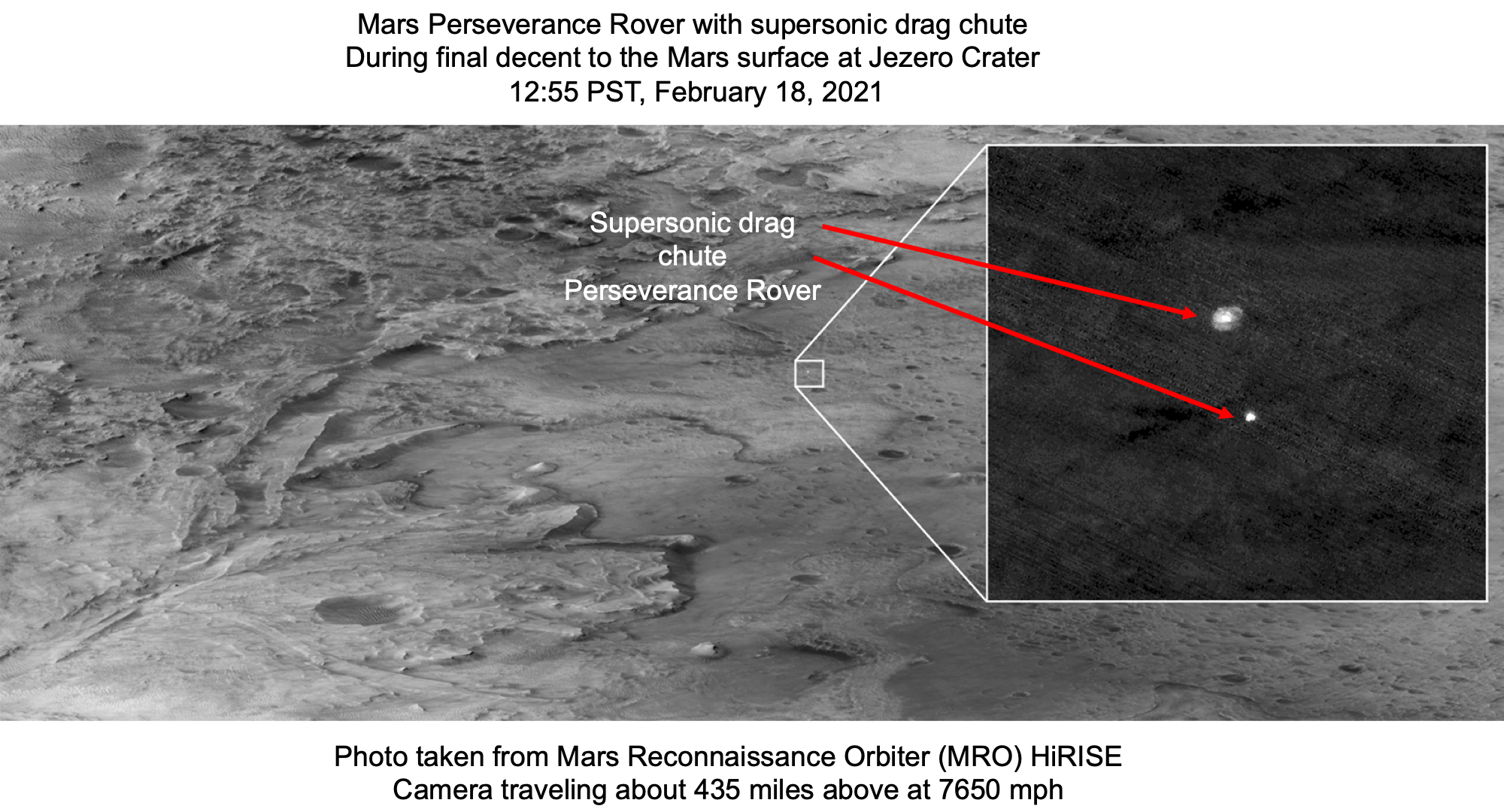
Get In Touch
Keep informed about the latest deep UV developments at Photon Systems by joining our mailing list.
ADDRESS
1512 Industrial Park St. Covina, CA 91722-3417
PHONE
626 967-6431


